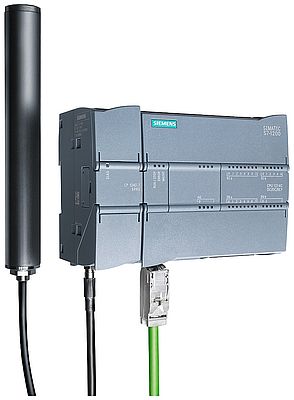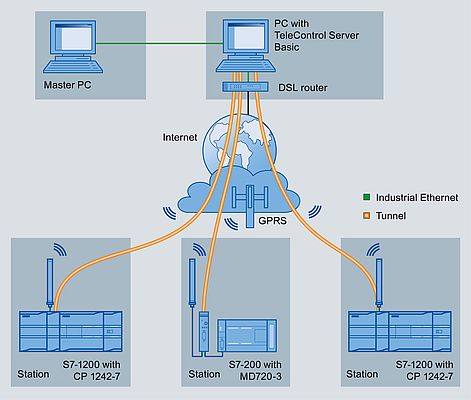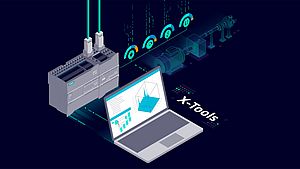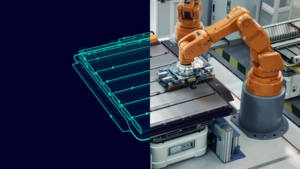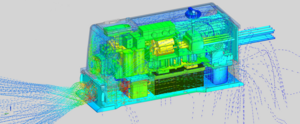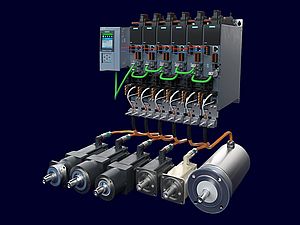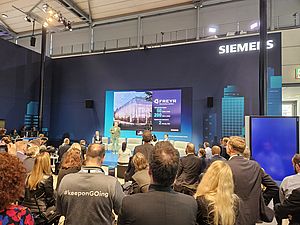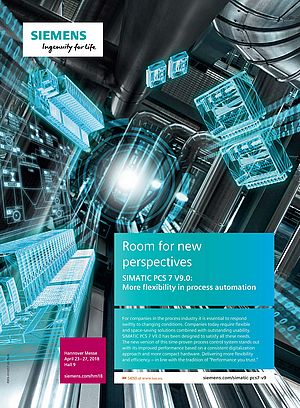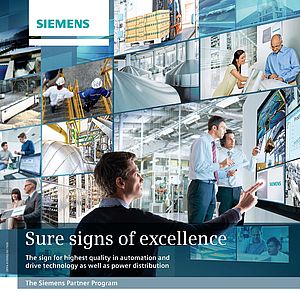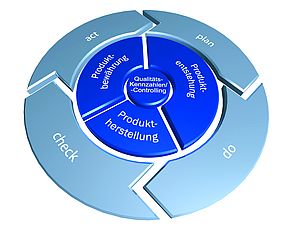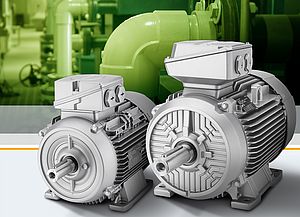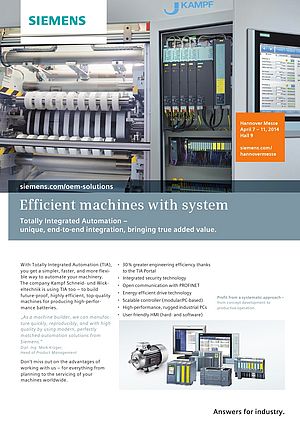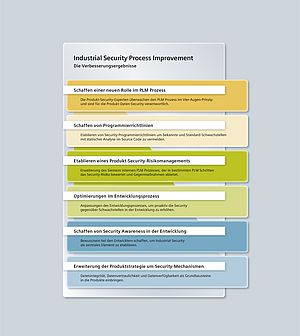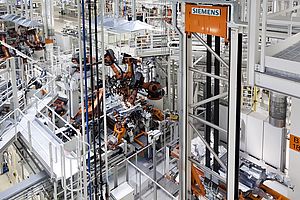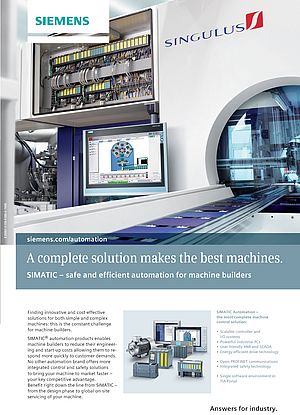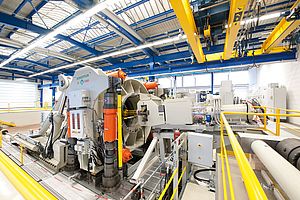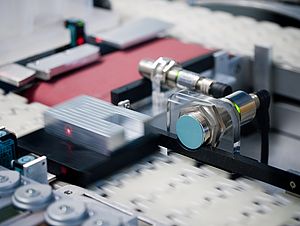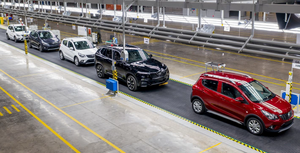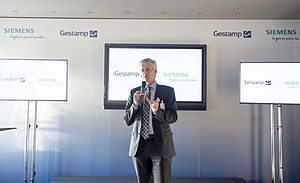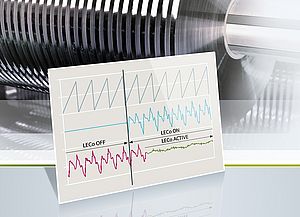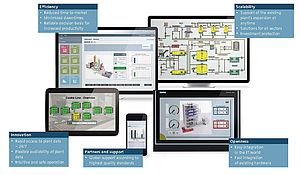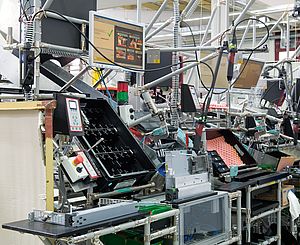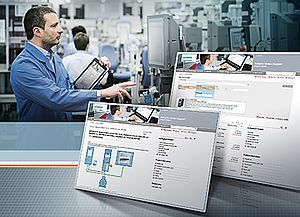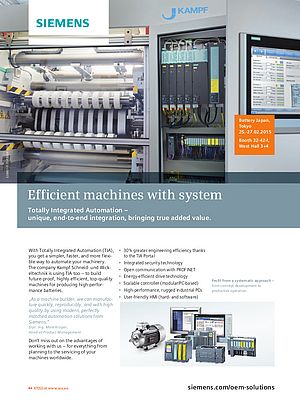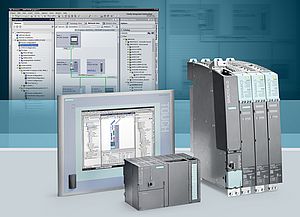Maintenance and control of processes and system parts in remote locations requires reliable and efficient remote control systems. A wide range of telecontrol systems offers matching solutions with harmonized products. Solutions based on compact controllers designed as remote control station and optimized for communication via GPRS are sufficient for basic tasks.
The major advantage of GPRS (General Packet Radio Service) is the use of an existing almost worldwide communication infrastructure so that there are no investments required to set up and maintain your own communication system. GPRS is currently supported in more than 220 countries via the GSM network ("Global System for Mobile Communications" network). The almost worldwide distribution of GPRS and the use of wireless communication devices operating in the frequency bands (850/900/1800/1900 MHz) lets you use a solution worldwide once it has been created and without any changes to the hardware. The invoicing of the packet-oriented GPRS service based on data quantity rather than connection time makes costs rather predictable.
A disadvantage of GPRS, however, is the fact that a wireless service provider does not guarantee availability of the communication network. Users of wireless communication networks can for the most part tolerate short network interruptions, but this can lead to more serious problems in automation technology. A solution must be provided on the system level in this case, for example, by data buffering.
The functionality of bidirectional data exchange is crucial for automation, for example, when querying input data, and is provided by the respective tunnel technologies so that there is a constant virtual connection between a central PC and a remote terminal unit (RTU). The assignment of dynamic IP addresses in wireless communication networks is replaced by fixed station names so that the devices can always be clearly identified.
Fully integrated remote control system
A holistic system approach is required to face the disadvantages of GPRS listed above. Siemens offers such a fully harmonized system, the "Telecontrol Basic" remote control system, which has been adapted for industrial communication via GPRS and fully integrated into the Siemens automation landscape.
In "Telecontrol Basic", remote control stations are based on Simatic S7-1200 compact controllers that communicate with the "Telecontrol Server Basic" (TCSB) control center software via CP 1242-7 communication processor using wireless communication to exchange data for monitoring and control. You can also connect Simatic S7-200 controllers to the control center if they are connected with the GSM/GPRS modem MD720-3. The TCSB is connected directly with the GPRS provider through a dedicated line or permanently connected to the Internet via DSL (Digital Subscriber Line). SCADA ("Supervisory Control and Data Acquisition") clients can access and change process data using the integrated OPC server. The necessary data security is ensured by appropriate encoding mechanisms, resulting in a tunneled connection between GSM/GPRS device and connection manager in the control center PC. Both parties can use this tunnel for data exchange in both directions.
The "Telecontrol Basic" can be used to implement cost-efficient alarm systems and simple remote control solutions, such as monitoring and control applications in the following areas:
1. Monitoring and control of stationary stations, for example, in ...
· water / wastewater treatment plants,
· centrally controlled building management,
· traffic engineering systems,
· monitoring of power supply networks or
· remote monitoring of machine controllers.
2. Monitoring and control of mobile stations:
In addition to stationary stations, there are also remote control applications in which communication takes place to mobile participants if central monitoring or control is required: for example, monitoring or transmitting status data of large construction machines to monitor local automation.
In addition to classical application areas in an industrial environment, there are also applications in the industry-oriented environment: Beverage vending machines can, for example, transmit their fill level to the delivery facility so that the dispatcher can schedule refilling the machine in time. The system can also be used for video monitoring in public transportation to respond to dangerous situations faster or with a better focus.
Saving time and money with Teleservice
When remote system parts are diagnosed or serviced by remote access, we are calling it Teleservice. Most machine and plant manufacturers also offer maintenance service in addition to their actual systems these days. If there are problems with the machine/plant, the service technician can log on to the remote system for troubleshooting and immediately remedy the problem or limit the number of possible causes. The system is also helpful during commissioning of the plant if you can directly access the system from the control center and make program adjustments, for example. In both cases, the service technician must log on to the Telecontrol server by using a PC with Internet connection and request access to a station. The Telecontrol server then checks the connection to the requested station and establishes a connection between the station and the PC of the service technician if he/she has the appropriate access rights. This means the service technician can now perform the requested maintenance work right from the control center.
Teleservice has an enormous potential to reduce the labor required and money spent by the plant operator. And if it is paired with an efficient remote maintenance concept, the plant operator can generate even more business.
If process and control signals are transferred to the RTUs in addition to the Teleservice functions, we are talking about Telecontrol. Telecontrol is an event-controlled or cyclical process data exchange used in very remote systems for process monitoring and process control. Teleservice is an integral part of Telecontrol in this case.
Conclusion
The remote control system "Telecontrol Basic" from Siemens covers the area of Telecontrol in addition to Teleservice and its use of compact controllers and the GPRS telecommunication service makes it suitable for cost-efficient alarm systems as well as basic remote control applications.
The modular concept based on the Simatic S7-1200 compact controller and the integration into the TIA ("Totally Integrated Automation") portal, the new engineering framework from Siemens, are the ideal prerequisites for an optimally harmonized system and complete integration into the Siemens automation landscape.


